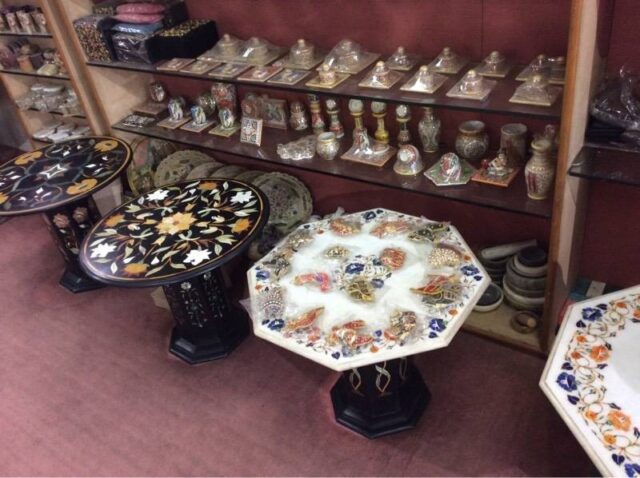Agra, known for its rich cultural heritage and exquisite handicrafts, presents a unique opportunity for artisans and businesses to reach a broader audience. Building a custom app tailored for Agra’s handicraft sector can enhance visibility, streamline operations, and foster customer engagement. Here’s a step-by-step guide to help you create an effective app for handicraft businesses in Agra.

Table of Contents
Toggle1. Define Your Objectives
Before starting the development process, clearly outline the objectives of your app. Consider the following questions:
- What specific needs of handicraft businesses are you aiming to address?
- Are you focusing on e-commerce, promoting local artisans, or enhancing customer engagement?
- What features will be essential for your target users (artisans, customers, etc.)?
2. Identify Your Target Audience
Understanding your target audience is crucial for creating a user-friendly app. In the context of Agra’s handicraft businesses, your audience may include:
- Artisans and Craftsmen: Local creators looking to promote their work and reach customers.
- Consumers: Buyers interested in purchasing authentic handicrafts, both locally and internationally.
- Retailers and Wholesalers: Businesses that want to source products from local artisans.
3. Conduct Market Research
Research existing apps and platforms in the handicraft sector to identify trends, strengths, and weaknesses. Analyze competitors to understand what features and services resonate with users. This research will help you determine what gaps your app can fill and how to position it effectively in the market.
4. Outline Essential Features
Based on your objectives and audience, outline the key features your app should include. Some essential features for a handicraft business app might be:
- Product Listings: Display a catalog of handicraft products with images, descriptions, prices, and availability.
- E-commerce Capabilities: Enable users to purchase products directly through the app with secure payment options.
- Artisan Profiles: Highlight individual artisans, showcasing their stories, skills, and products.
- Location-Based Services: Include a map feature that helps users locate nearby artisans or stores selling handicrafts.
- Customer Reviews and Ratings: Allow customers to leave feedback on products and services, enhancing trust and credibility.
- Social Sharing: Integrate social media features that enable users to share products and promote artisans, increasing visibility.
- Notifications and Updates: Send push notifications about new products, promotions, or local events to keep users engaged.
5. Design an Intuitive User Interface (UI)
A user-friendly interface is vital for attracting and retaining users. Focus on creating an intuitive and visually appealing UI. Key design principles include:
- Simple Navigation: Ensure users can easily navigate through the app without confusion.
- High-Quality Visuals: Use high-resolution images of handicrafts to showcase the craftsmanship and detail.
- Cultural Elements: Incorporate design elements that reflect Agra’s cultural heritage, creating a connection with local users.
6. Choose the Right Development Approach
Decide whether to build a native app (specific to iOS or Android), a cross-platform app (working on both), or a web app. Consider factors such as budget, target audience, and desired functionalities.
- Native App Development: Offers the best performance and user experience but requires separate development for each platform.
- Cross-Platform Development: Saves time and resources by using frameworks like React Native or Flutter, allowing a single codebase for both iOS and Android.
7. Develop and Test the App
Once you have a clear plan and design, it’s time to develop the app. Engage a skilled development team with experience in creating e-commerce or community-focused applications.
- Iterative Testing: Conduct thorough testing during the development process to identify and fix any bugs or usability issues. Involve potential users in beta testing to gather feedback and make necessary adjustments.
8. Launch and Promote the App
After successful testing, plan a strategic launch for your app. Consider the following promotional strategies:
- Social Media Campaigns: Use platforms like Facebook and Instagram to promote the app and engage with potential users.
- Collaborate with Local Artisans: Partner with artisans to promote the app, offering them a platform to showcase their products.
- Leverage Local Events: Attend local fairs or craft exhibitions to promote the app and connect with your audience directly.
- SEO and Content Marketing: Optimize your app’s presence in app stores and create content that highlights the artisans and their products.
9. Gather Feedback and Improve
Post-launch, actively seek user feedback to identify areas for improvement. Regularly update the app to fix bugs, enhance features, and add new content based on user preferences. Continuous improvement is crucial for maintaining user engagement and satisfaction.
10. Monitor Performance and Analytics
Use analytics tools to monitor user behavior, sales performance, and app engagement. This data will provide insights into what’s working and what needs adjustment, helping you make informed decisions about future updates and marketing strategies.
Conclusion
Building a custom app for Agra’s handicraft businesses presents an exciting opportunity to promote local artisans and enhance customer experiences. By focusing on user needs, incorporating essential features, and leveraging effective marketing strategies, your app can significantly impact the growth and visibility of Agra’s vibrant handicraft sector. As you embark on this journey, remember to prioritize user feedback and continuously adapt to the evolving market to ensure long-term success.


No responses yet